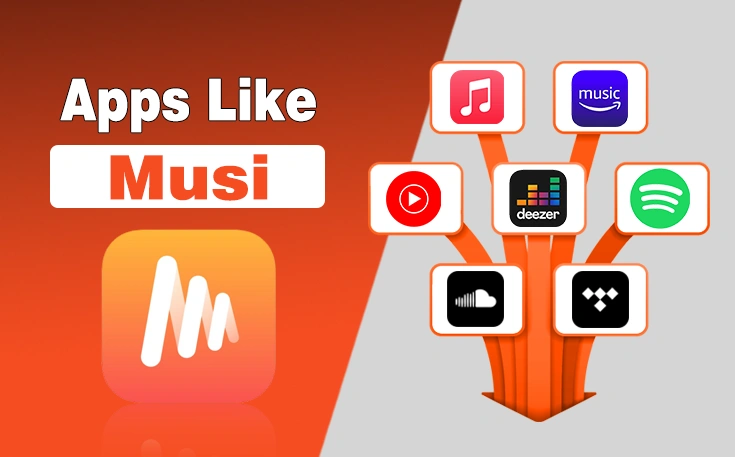We spend so much time optimizing keywords, writing perfect meta titles, and building backlinks, but how often do we think about the file name of an image we upload? Does image file name affect SEO?
Honestly, I didn’t give it much attention in the beginning. I just threw in images named “IMG_0458.webp” or “screenshot.webp” and hit upload. But when I started digging into how search engines process content, I realized I was missing a golden opportunity to improve SEO, without even writing a single extra word of text.
In this blog post, I want to walk you through why image file names matter, how they influence your SEO, and the best practices I use to get the most out of every image I publish. You might be surprised how such a small tweak can give your content an edge in search results.
What is the Image File Name?
Image File Name is the name of the image that is given to it when captured through a camera or while downloading it from online resources.
Whenever you capture an image or download one from Google, it gets a name with which it is stored on your device. In short, it is the identification of the picture so you can find it easily. In terms of blogging, it is the name of the image when you upload it to your website or blog.
Why Image SEO Is Often Overlooked but Incredibly Valuable?
The image file name is one of the earliest cues that search engines use to understand what an image is about. When you optimize SEO for image names, it is not just about making your site look pretty. It is about improving site performance, accessibility, and discoverability in search.
And when I realized that, I stopped treating it as an afterthought.
Search engines like Google cannot “see” an image the way we do. They rely on context – surrounding text, alt attributes, file names, and even captions. If you skip giving your image a proper name, you are skipping one of the simplest but most effective ways to help search engines understand your content.
Does Image File Name Affect SEO and How Google Uses Them?
The simple answer is “Yes.”
While image file name SEO is not a direct ranking factor, it still has a role in influencing Google to understand the context of your image and article and rank it higher in the SERP.
In the under section, I have outlined exactly how search engines use image file names to enhance content understanding.
1. They Help Search Engines Understand the Image Content
Image file names act like clues. When search bots crawl your site, they look for every hint they can to identify what each file is about. If your image is named “chocolate-cake-recipe.webp”, it gives a much clearer context than “IMG_2323.webp” ever could.
This extra information boosts the relevance of your page for related search queries. That’s the reason I am emphasizing the image file names SEO.
2. They Influence Image Search Rankings
Have you ever clicked on “Images” in a Google search? That’s Image SEO at work. Google indexes and ranks images based on relevance, and the file name plays a direct role in that ranking.
A well-named image can appear in Google Images, drive traffic to your site, and support your broader SEO strategy. That’s why you should focus on Image Names SEO.
3. They Enhance Overall Page Relevance
Here is something I noticed:
“When image file names match the keywords on the page, the entire content becomes more semantically aligned.”
It consistently strengthens the topical focus of the page and improves Semantic SEO. Although it is a small move, it supports the larger content strategy without stuffing keywords unnaturally.
4. They Support Accessibility and User Experience
While not directly tied to file names, accessibility is a major SEO factor. When you write descriptive file names, they can improve clarity for developers and content editors.
Thus, it makes it easier to pair them with accurate alt tags – which, in turn, helps screen readers and users with disabilities.
How to Name Images File for SEO? Best Practices
Now that you know “does image file name affect SEO,” let me walk you through how you should name your image files before uploading them to a post. These best practices will help you turn every image into an SEO asset.
1. Use Descriptive and Relevant Keywords
When naming an image, you should always ask: “What is this image really showing?” Then you can describe it using relevant keywords you are targeting in the article. If you are writing about “homemade lemonade,” and use a photo of the final drink, you can name the file something like
- “homemade-lemonade-glass.webp.”
2. Keep the File Name Short but Specific
You don’t need to write a paragraph as your file name. Keep it concise. Something like “sunset-over-miami-beach.webp” is perfect.
It is descriptive, includes keywords, and tells search engines what they need to know without being excessive.
3. Use Hyphens to Separate Words
Search engines read hyphens as spaces, but they cannot process underscores the same way. So instead of writing “redvelvetcake.webp” or “red_velvet_cake.webp”, you should go with “red-velvet-cake.webp.”
It is cleaner, more readable, and better optimized.
4. Avoid Using Stop Words
Next, it would be best if you try to remove small filler words like “and,” “the,” or “a” from file names. Instead of “a-glass-of-cold-water.webp”, I would simplify it to “glass-cold-water.webp.” It’s more focused and avoids diluting the keyword relevance.
5. Make the File Name Unique
If you are uploading multiple images of the same product or topic, you have to make sure each file name is distinct. For example:
- handmade-wooden-chair-front.webp
- handmade-wooden-chair-side.webp
- handmade-wooden-chair-closeup.webp
This helps prevent duplicate content issues and keeps each image clearly defined.
6. Align File Names with Page Keywords
Consistency is key in SEO. If your article targets “organic pet food,” then naming your image “organic-dog-food-bowl.webp” helps reinforce that main topic.
I always make sure the image name relates to the article’s primary or secondary keywords.
Final Thoughts – Small Changes, Big SEO Wins
These are the details on “Does image file name affect SEO?” At the end of the day, naming your image files correctly is a simple but powerful way to enhance your SEO. It doesn’t take much time, doesn’t cost anything, and yet it can bring in real results over time.
I have seen traffic improvements and better image search rankings just by updating file names before upload. It is easy to ignore the little details when you are focused on writing high quality content, but these small steps add up.
Search engines want context, clarity, and consistency. When you provide those – even through something as simple as an image name – you give your content the best chance to succeed in a competitive space.
Need custom app with amazing features?
Get a Quote




